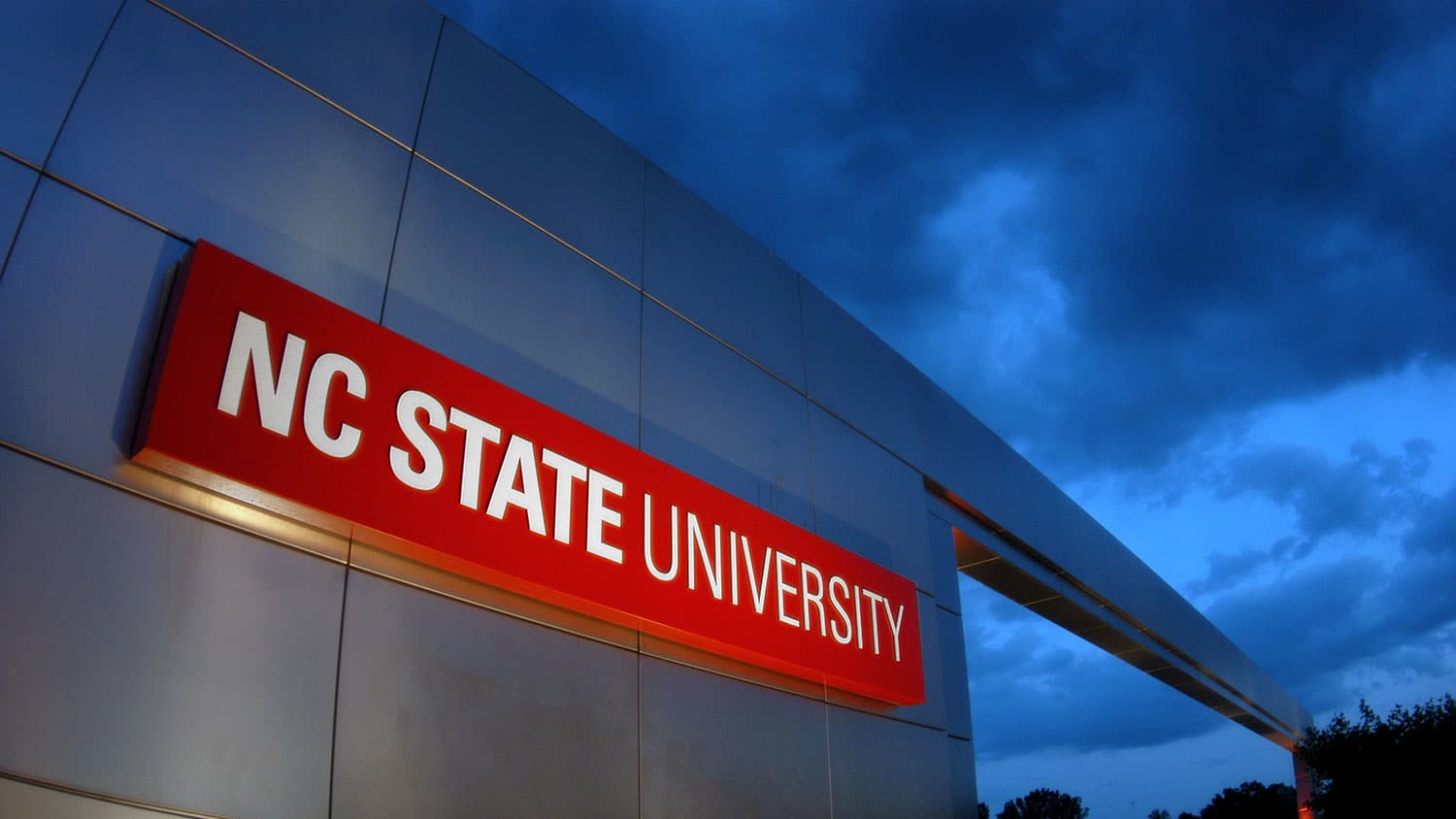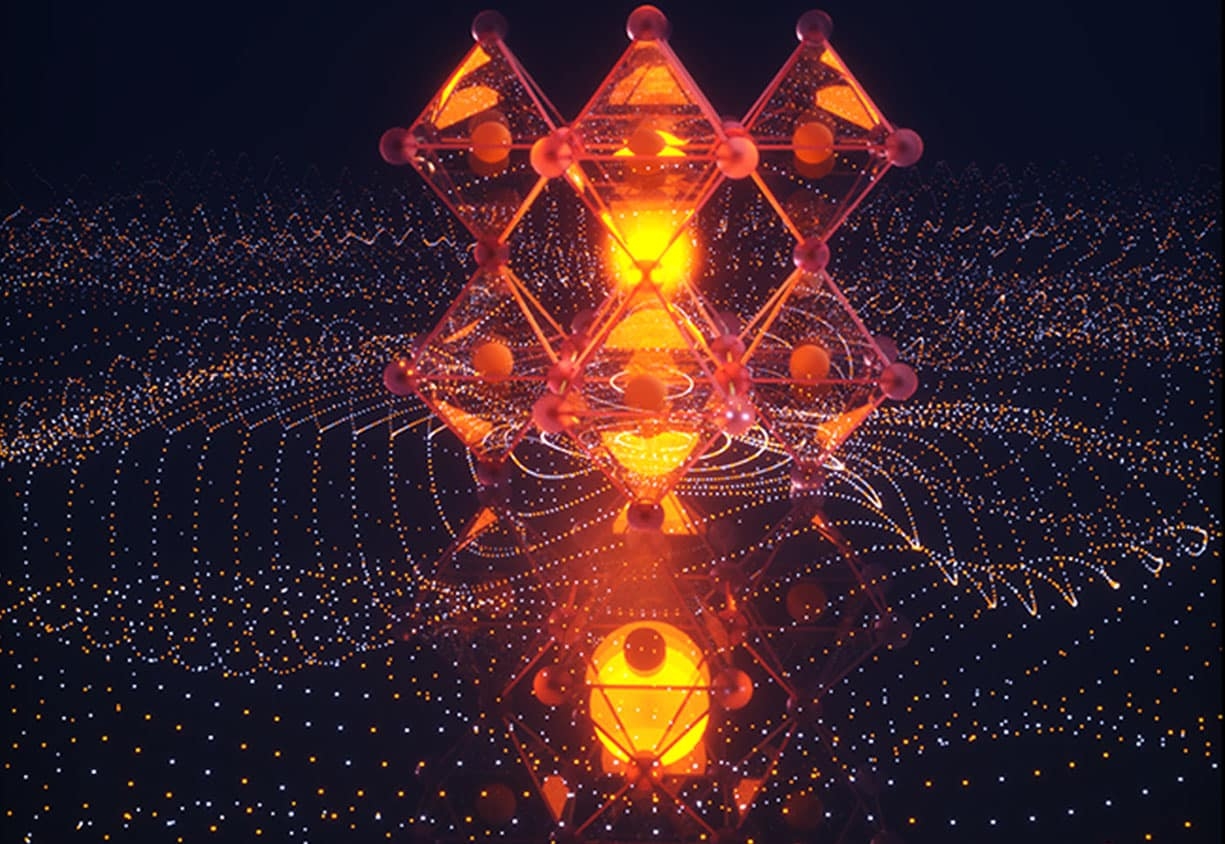For Immediate Release
Researchers from North Carolina State University and the University of North Carolina at Chapel Hill used chiral phonons to convert wasted heat into spin information – without needing magnetic materials. The finding could lead to new classes of less expensive, energy-efficient spintronic devices for use in applications ranging from computational memory to power grids.
Spintronic devices are electronic devices that harness the spin of an electron, rather than its charge, to create current used for data storage, communication, and computing. Spin caloritronic devices – so-called because they utilize thermal energy to create spin current – are promising because they can convert waste heat into spin information, which makes them extremely energy efficient. However, current spin caloritronic devices must contain magnetic materials in order to create and control the electron’s spin.
“We used chiral phonons to create a spin current at room temperature without needing magnetic materials,” says Dali Sun, associate professor of physics and member of the Organic and Carbon Electronics Lab (ORaCEL) at North Carolina State University.
“By applying a thermal gradient to a material that contains chiral phonons, you can direct their angular momentum and create and control spin current.” says Jun Liu, associate professor of mechanical and aerospace engineering at NC State and ORaCEL member.
Both Liu and Sun are co-corresponding authors of the research, which appears in Nature Materials.
Chiral phonons are groups of atoms that move in a circular direction when excited by an energy source – in this case, heat. As the phonons move through a material, they propagate that circular motion, or angular momentum, through it. The angular momentum serves as the source of spin, and the chirality dictates the direction of the spin.
“Chiral materials are materials that cannot be superimposed on their mirror image,” Sun says. “Think of your right and left hands – they are chiral. You can’t put a left-handed glove on a right hand, or vice versa. This ‘handedness’ is what allows us to control the spin direction, which is important if you want to use these devices for memory storage.”
The researchers demonstrated chiral phonon-generated spin currents in a two-dimensional layered hybrid organic-inorganic perovskite by using a thermal gradient to introduce heat to the system.
“A gradient is needed because temperature difference in the material – from hot to cold – drives the motion of the chiral phonons through it,” says Liu. “The thermal gradient also allows us to use captured waste heat to generate spin current.”
The researchers hope that the work will lead to spintronic devices that are cheaper to produce and can be used in a wider variety of applications.
“Eliminating the need for magnetism in these devices means you’re opening the door wide in terms of access to potential materials,” Liu says. “And that also means increased cost-effectiveness.”
“Using waste heat rather than electric signals to generate spin current makes the system energy efficient – and the devices can operate at room temperature,” Sun says. “This could lead to a much wider variety of spintronic devices than we currently have available.”
The research was supported by the National Science Foundation and the U.S. Department of Energy. Wei You, professor of chemistry at the University of North Carolina at Chapel Hill and a member of ORaCEL, is also a co-corresponding author of the study.
-peake-
Note to editors: An abstract follows.
“Chiral-Phonon-Activated Spin Seebeck Effect”
DOI: 10.1038/s41563-023-01473-9
Authors: Kyunghoon Kim, Eric Vetter, Cong Yang, Ziqi Wang, Rui Sun, Andrew Comstock, Dali Sun, Jun Liu, North Carolina State University; Liang Yan, Wei You, University of North Carolina at Chapel Hill; Yu Yang, Xiao Li, Jun Zhou, Lifa Zhang, Nanjing Normal University, Nanjing, China
Published: Feb. 13, 2023 in Nature Materials
Abstract:
Utilization of the interaction between spin and heat currents is the central focus of the field of spin caloritronics. Chiral phonons possessing angular momentum arising from the broken symmetry of a non-magnetic material creates the potential for generating spin currents at room temperature in response to a thermal gradient, precluding the need for a ferromagnetic contact. Here we show the observation of spin currents generated by chiral phonons in a two-dimensional layered hybrid organic-inorganic perovskite implanted with chiral cations when subjected to a thermal gradient. The generated spin current shows a strong dependence on the chirality of the film and external magnetic fields, of which the coefficient is orders of magnitude larger than that produced by the reported spin Seebeck effect. Our findings indicate the potential of chiral phonons for spin caloritronic applications and offer a new route toward spin generation in the absence of magnetic materials.
This post was originally published in NC State News.
- Categories:



